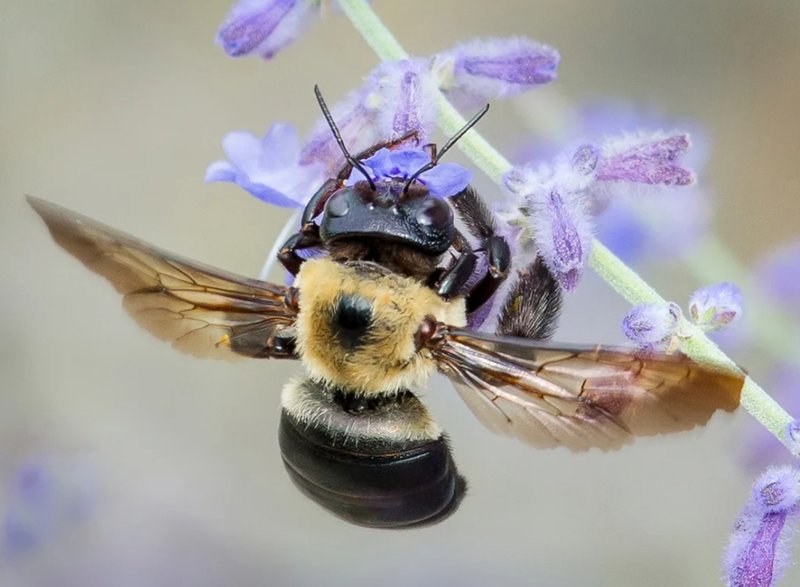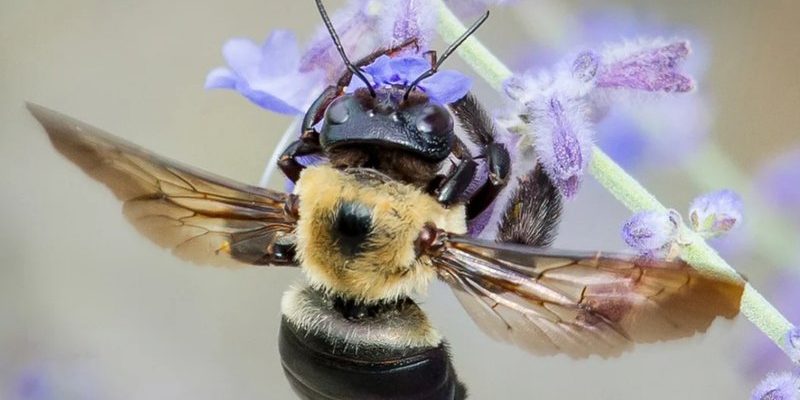
Scientists have been intrigued by carpenter bees for years, delving deep into their habits, social structures, and even their role in our ecosystems. They’ve studied everything from their nesting patterns to their foraging behaviors, uncovering how these bees contribute to the environment. Let’s dive into the exciting world of carpenter bee research and explore what makes these bees worth studying.
The Importance of Studying Carpenter Bees
Understanding carpenter bees is crucial for several reasons. First and foremost, they play an important role in pollination. As these bees zip from one flower to another, they help plants reproduce, which is vital for a healthy ecosystem. Without pollinators, many plants would struggle, and that includes crops we depend on for food.
Moreover, studying carpenter bees can reveal insights into the health of our environment. Their populations can indicate the overall state of biodiversity in a region. When scientists see changes in bee populations, it can signal broader environmental shifts, perhaps due to climate change or habitat loss. So, keeping an eye on these buzzing builders can tell us whether our ecosystems are thriving or facing challenges.
Carpenter bees are also fascinating in their behavior. Unlike honeybees that live in large colonies, many carpenter bee species are solitary. This means each female bee builds her own nest and takes care of her young independently. This unique lifestyle provides an excellent opportunity for scientists to understand how solitary bees interact with their environment compared to social bees.
Nesting Habits and Structures
One of the most interesting aspects of carpenter bees is their nesting habits. They can often be found drilling holes into wood to create their homes. You might think of this as tiny construction sites in your backyard. Their nests are often found in unpainted or weathered wood, where they use their strong jaws to chew through the surface.
The unique design of their nests is also worth noting. These tunnels can be quite complex, with individual chambers designated for laying eggs. Scientists have carefully documented these structures, revealing how the bees create the perfect environment for their larvae to develop. Inside the nests, they often store pollen and nectar, making it like a pantry filled with food for their young.
By studying how carpenter bees select nest sites and construct their homes, researchers can learn about their preferences and behaviors. For example, they often choose wood that is already softened by age or weathering, which makes their job easier. This preference can give scientists clues about which environments are most suitable for their survival and reproduction.
Pollination Patterns and Plant Interactions
Carpenter bees are key players in our gardens and farms, acting as pollinators for various plants. Research has shown that these bees are particularly attracted to certain types of flowers, such as those with tubular shapes and vibrant colors. You might notice them hanging around flowers like bluebells or foxgloves, which offer the nectar they crave.
Studies have also explored how carpenter bees contribute to the pollination of crops, including tomatoes and berries. By investigating their foraging patterns, scientists learn which plants benefit most from these bees’ pollinating efforts. For example, grab a handful of blueberries and think about how those sweet fruits are directly tied to the busy work of carpenter bees!
Interestingly, carpenter bees can also show preferences for visiting certain flowers over others, leading to a focus on specific plants. This behavior, known as flower constancy, helps ensure that they’re maximizing their foraging efficiency. Scientists have been closely observing these patterns to understand the relationship between bees and plants better.
Behavioral Studies and Social Structures
When it comes to behavior, carpenter bees are quite the intriguing subjects. Unlike honeybees that thrive in large colonies, many carpenter bees are solitary. This solitary lifestyle means that each female takes on all responsibilities, from building nests to raising offspring.
You might wonder how they interact with one another. While they don’t live in hives, male carpenter bees do have some social interactions. Males often patrol territories, and you can sometimes spot them buzzing around and defending their space from other males. Scientists find this behavior interesting because it gives insights into how competition and mating behaviors develop in solitary species.
Research has also touched on how female carpenter bees communicate and mate. The mating rituals can involve specific flight patterns or pheromones that females release to attract males. By studying these behaviors, scientists are gaining a deeper understanding of their reproductive strategies and social dynamics.
Impacts of Environmental Changes
As our planet faces changes due to climate change, habitat loss, and pollution, carpenter bees are not immune to these pressures. Scientists have stepped up efforts to monitor their populations and study how environmental changes are affecting them. For instance, rising temperatures can alter their foraging patterns and nesting behaviors.
Researchers have discovered that changes in flowering times—driven by shifting climates—can disrupt the synchronicity between bees and the plants they pollinate. This can lead to food shortages for the bees, negatively impacting their survival. It’s a bit like having a dinner party where the guests arrive before the food is served!
By keeping track of carpenter bee populations and their interactions with plants, scientists play a vital role in understanding how we can help protect these industrious pollinators. This research also informs conservation strategies, focusing on creating habitats that support both bees and other wildlife.
Future Directions in Carpenter Bee Research
Looking ahead, the study of carpenter bees is likely to evolve further. With advancements in technology, scientists have new tools at their disposal to observe these bees in their natural habitats. Drones and camera traps, for instance, can provide insights into their behavior without disrupting them.
There’s also a growing interest in how urban environments affect carpenter bee populations. As cities expand, understanding how these bees adapt to urban landscapes can inform how we design green spaces to support their needs. Urban gardening, for example, can play a role in providing habitats that benefit these pollinators.
In addition, interdisciplinary studies that combine ecology, genetics, and climate science could unlock new knowledge about the resilience of carpenter bees. This kind of research can help us understand how they might adapt to ongoing changes, ensuring that we can protect them effectively.
In summary, carpenter bees are more than just cute garden visitors. They are essential players in our ecosystems, and studying them offers invaluable insights into our environment. Whether it’s through their unique nesting habits or their role as pollinators, there’s a lot to learn from these hardworking bees! As scientists continue to explore how carpenter bees interact with their world, we can better appreciate and protect these incredible creatures.

